Bowhunter by Fall - September
Final Preparation
Hello future bowhunters! We are growing closer to opening day. With Texas' whitetail deer archery season open from October 3rd through November 6th, we hope you will have your boots on the ground and bow in your hand before receiving another note from us! Let's take a look at a few final details that will tie up some loose ends you may have.

Confirm Your Hunting Regulations
Regulations, bag limits and other special conditions change every season, so do not rely on “this is the way we have always done it” or “someone told me it was okay”. Verify the information to keep yourself legal, avoiding the most common mistakes and stay safe while doing your part to protect the natural resources of our state.
Check county and state regulations as well as rules specific to the property you are hunting. For private property that is not yours, be sure that you have documentation of landowner consent and that you have communicated your hunt plan. For public hunting lands, consult the public hunting booklet for that specific property. Each public hunting land may have unique guidelines and dates that define the activities allowed there.
|
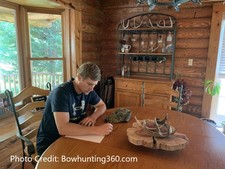
Create and Share a Hunt Plan
“Good planning means living the experience in advance.”
Planning is one of the most vital safety aspects of the hunting experience. Ensuring the safety of yourself and others requires drafting a written itinerary that addresses all the things you’ve imagined, good or bad, regarding this new adventure you’re about to embark on. As you prepare to venture out in the woods this season in search of your game harvest, take some time to develop a solid hunt plan and share it with your close friends and relatives prior to your departure. The more challenging you anticipate your experience will be, the more thorough your planning should be. If you need to be helped, someone at home should know where and when to start looking. After you return safely from your successful hunting experience, take a moment to reflect on which aspects of your plan worked well and what areas can be improved in preparation for the next adventure.
|
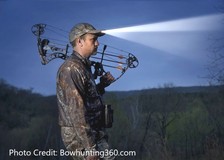
Morning vs Evening Hunting
Why not both? If your schedule permits, consider planning a morning and evening sit. For both, early fall scouting will help you determine when animals are the most active in your area. Nothing beats being in a blind listening to the morning chorus from our bird friends before sunrise. On the flip side there’s no better opportunity to bond with a close friend or relative than during a sit at dusk. Whichever you prefer, allow yourself to take in everything the experience offers.
|
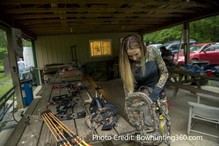
Organize and Pack Your Bowhunting Gear
We have discussed gear previously, but now is the time to organize and pack it for your bowhunt. From practice, research and conversations with your mentors and peers you may have added or excluded some equipment. Now is the time to be sure that you have the essentials and test pack them so that on opening day you have everything ready.
The specific equipment you take will change based on the hunt. A short hunt, quick scouting trip or all-day hunt require customization of your hunting and packing plans.
When organizing, consider weight distribution in your pack. Heavy items should be close to your body and low, just below your lumbar curve. Lighter items go near the top and soft items like clothing can be shoved into places to pack everything tight. Consider your left and right balance as well. Water carriers should be topped off, so they don’t slosh and create noise. Put items you are most likely to access in easy to reach places or in the order of how you will access them. For example, when in the field your tree stand safety harness comes out of the pack before a phone charger or field dressing kit. Put things like a headlamp back in the same place every time as a mental checklist of where they are and for future use. Make sure your first aid kit is in an obvious and convenient place. Many bowhunters attach their release aid to their bow so they are always together, and many pack a spare release.
|

Do Not Forget Your Blaze Orange!
No hunter orange is required while hunting on private property, but it is strongly recommended. Public hunting lands in Texas require 400 square inches of "blaze" orange with 144 square inches appearing on both chest and back. Blaze orange headwear must also be worn.
|

Tuning Up Your Body
Nothing can ruin a good hunt faster than being out of physical shape. So here are three simple exercises everyone can do to get ready for the big hunt.
Cardio - Going on long walks or short jogs can really help step up your game. By improving your cardio, you can be more prepared for the hunt. Lots of people think that they are “just going to sit in a blind” or “I’m not elk hunting in the mountains,” but everyone who has had to trail a deer in the woods or drag a big buck up a hill knows the benefit of being in good shape.
Stretching - Stretching your mussels every day can help prevent injury. 5 easy stretches that everyone can do each day are tow touches, lunges, arm swings, calf stretches, and quad stretches. Do those for 2 or 3 minutes several times a day and you can help prevent injury in the field.
Squats - Squats are a great all-around exercise. It works your lower back all the way to your feet. It also helps your balance and posture. Do twenty squats, three times a day, and lifting that big buck off the ground will be much easier.
|
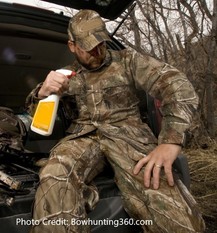
Scent and Sound
If employing scent control, assure that all the gear you intend to use has been treated. If you expect to sweat in route to your hunting spot consider taking your scent control, body wipes or change of clothes into the field with you.
A few more suggestions:
- Roll up, tuck or tape down all loose straps and laces
- Cover zipper pulls, metal on metal contact or other noisemakers with athletic tape
- Use cinch straps across your pack to reduce bulk and noise
- Cut off the sticky side of Velcro
- Transfer food from noisy commercial food packaging into quieter baggies or storage containers
- Invert your hydration bladder and “sip” out the air to reduce sloshing
|

Calls and scents are great tools for luring in a big buck in the rut, but in early fall they are not as helpful. As bucks move out of their summer patterns, their focus shifts to setting up new territories. Their hormones are not in full effect and they will not react to calls or lure scents just yet. Save your calls and lures for later in the fall once pre-rut and rut have started.
|
Early Fall Scouting
With opening day of archery season right around the corner. Late September is our last chance to get in some very crucial last-minute scouting. Unlike scouting for rifle season in October, there is going to be much less buck sign on the ground. The deer are just now coming out of their summer patterns and with cooler weather, they are going to start expanding their home range. Here are 4 key things to think about and to look for when doing your early fall scouting.

1. Food sources are changing - Anyone who has planted a garden knows that you can't grow your summer beans all year long. You need to rotate what you plant and likewise a deer’s main food source will change from season to season. Look for your oak trees that are putting on acorns. Some trees will produce more seeds than others so this will require you getting out and finding the food sources. You should also look for tender shoots of plants and trees. Deer don’t like to eat mature tough grasses. New growth in the fall makes for prime food. If on private land, you may want to plant an easy food plot by throwing handfuls of clover seed just before a rain. The deer will love it and it grows quickly.
|

2. Territories are being claimed - All summer bucks have been in bachelor groups. These are small to medium sized groups of male only deer. They stick together while they grow this year's antlers. When the days shorten and their antlers harden, these groups break up and the bucks find their own territory in preparation for rut. During this time, you will start to notice that you will get fewer and fewer trail cam pics with several bucks in them. Likewise, you will notice that locations that had no bucks will start to have buck in them.
|
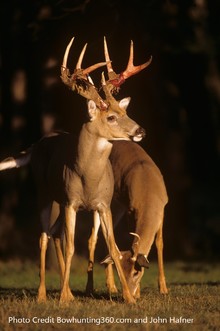
3. Getting rid of velvet - Deer antlers are hardening and it is time to scrape off the velvet. This means that you are going to start seeing your first scraps of the season on small tree trunks and limbs. These scrapes are ways for deer to indicate their territory, however in the early fall bucks are less concerned about territory and breeding and more concerned about beefing up and putting on a thick layer of fat and muscle before the rut instinct triggers. This means that early fall scraps do indicate buck activity, but do not expect them to be regularly visited like they would during the rut.
|
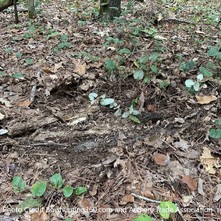
4. Bedding locations and movements - Deer are creators of habit. They like to bed in the same place most nights and will get up and take the same trails to food and water sources. Until the rut starts, you can expect to see the same deer in similar locations around the same time on most days. This means that if you can locate where your bucks are bedding and you can predict where they will be going for food and water, you can place yourself in and ideal spot for a shot at your buck.
|

Test Run
Pack your gear, put your hunting clothes on, grab your bow and take a short walk. Listen for equipment noise, observe any gaps in your camouflage and consider your physical comfort. Can you quietly maneuver to your hunting spot and load and draw your bow with this kit on? If not, fix it and set yourself up for success.
|
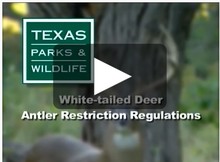
Is That Buck a Legal Harvest?
Check your county to determine if there are any antler restrictions. See also in the public land booklet to confirm if there are antler restrictions on any public lands you intend to hunt. A county could have restrictions, while a specific hunting property may not, and vice versa. It is critical you check both. If applicable, antler restrictions means a buck must have at least one unbranched antler or an inside antler spread of 13 inches or greater. Check the video for very helpful information on making legal decisions if antler restrictions are in place where you plan to hunt.
Remember that all public hunting lands require on-site registration via the My Hunt Harvest app, which can also be used to store your licenses, perform mandatory hunt harvest reporting and other helpful functions. Download it today!
The traditional Outdoor Annual was not printed this season. Instead, download and use the Outdoor Annual app, consult the website and recycle 2019-2020 and older annuals.
|

Tagging Your Deer
Read some tips on good behavior after the shot, including advice on tracking your game. When you have located your harvest, you must immediately attach your tag to it. This must be done prior to any field dressing, processing, transporting or photography. Feature your legally attached tag in your photos.
|

A tag from the hunting license of the person who killed the deer must be correctly and legibly completed in ink and immediately attached to the animal.
To tag your deer you MUST:
- Use the correct tag. 5-6 for antlerless, 7-9 for either sex
- Cut the tag out and attach it to the carcass
- Cut out the Day and Month of harvest
- Write in ink the property and county of harvest
- Complete and sign the White-tailed Deer Log on the back of your hunting license by printing in ink
Harvest reporting is mandatory in some counties and can be completed using the My Hunt Harvest app or online
|

Field Dressing Your Deer
After you have met your legal requirements by tagging and logging your deer, take some tasteful photos. It is easy to create conflict among non-hunters or youth by publicly displaying what could be viewed as gruesome photos. Now it is time to promptly field dress your deer. Check the link for a 10 step process or watch the video for an “in the action” view.
Deer meat spoils quickly and is a habitat for bacteria in hot weather. Thus, it is critical to field dress and begin cooling the venison as soon as possible. Field dressing means the removal of animal’s organs because they retain heat, hold bacteria and are prone to early spoilage. Skinning your deer helps dissipate heat and quartering the carcass into mesh game bags unlocks heat trapped at the ball joints in the hips, exposes more surface area to cooling, air circulation and evaporation and is a helpful means of transportation. Some hunters and situations call for the “gutless method” of field dressing.
Proper field care of game meat includes getting your venison into a pre-chilled and ice filled cooler to preserve the quality of your hard-earned protein. You can have your deer processed at reputable game meat processors or process the meat yourself with a few tips. Recipes and preparations are endless and so is the satisfaction you will find from hunting.
|
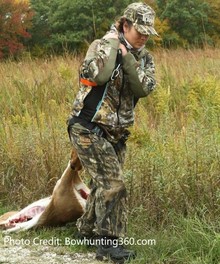
Get Your Deer to Your Vehicle
After all the planning, practicing and anticipation, you have successfully harvested an animal and are now need to get it to your vehicle. This is when you’ll appreciate those exercises that have prepared you for this moment. If lucky, you’re still fueled by adrenaline which will help provide the extra strength you need to safely exit the woods with your animal. As an alternative to the 4 ways mentioned in the link above, you could test your creativity and make your own deer drag by following the steps below:
You’ll need two large heavy-duty tarps with grommets, or something similar and 20-30 feet of parachute cord.
AT HOME Stack the two heavy-duty tarps on top of each other. Fasten 8-12 feet of the parachute cord onto the short edge of the tarp with stopper knots.
IN THE FIELD Place your deer on the tarp. Use the remaining parachute cord to lace the tarp around the animal, like lacing a shoe. Begin dragging to your destination.
|
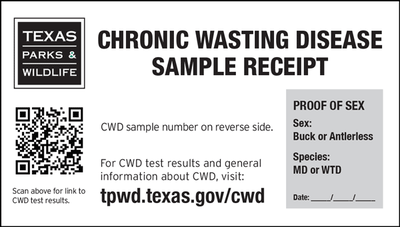
Chronic Wasting Disease (CWD) Testing
CWD has been known to exist in Texas since 2012. To help contain the potential spread, deer harvested within the following areas are REQUIRED to be brought to a TPWD check station within 48 hours of harvest.
CWD Containment and Surveillance Zones
- Trans-Pecos
- Panhandle
- South-Central Texas
Check the link for more specifics on the borders of each region, and to find the nearest check station. For more details on CWD, including rules on moving harvested or live game in and out of Texas, find it here, on the TPWD Website.
|
Those were a lot of loose ends! We hope that next time you hear from us, you have had to put them to use, especially the field dressing and dragging of your harvest! In October we will follow up with an ask to see some photos from your adventures and hear about your successes. Be safe, be well, and we are wishing you the best of luck when you take that ethical shot!
TPWD's Community Archery Team
Texas Parks and Wildlife Department
(512)389-4361 (office)
Robert.Owen@tpwd.texas.gov
|